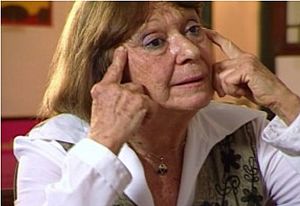Lygia Bojunga Nunes facts for kids
Lygia Bojunga is a very famous Brazilian writer. She was born on August 26, 1932, in Pelotas, Brazil. She is best known for writing amazing books for children and young adults. Lygia Bojunga is one of only four people in the world to win two of the biggest international awards for children's literature.
She received the Hans Christian Andersen Medal in 1982. This award celebrates her lasting contribution to children's books. In 2004, she won the Astrid Lindgren Memorial Award. This prize honors her entire career in children's and young adult literature.
A big part of her books is that they show the world from a child's point of view. Her stories often use a style called "magical realism." This means that everyday life mixes with magical or fantastical things.
Contents
About Lygia Bojunga's Stories
Lygia Bojunga's stories are full of imagination and wonder. She tells tales in a way that feels like someone is speaking directly to you. In her books, anything can happen! She mixes fun and beautiful language with a bit of humor. She also writes about important social issues. She loves freedom and cares deeply about children who might be struggling.
Fantasy is often a way for her characters to deal with sad or difficult experiences. It can also be an escape from a tough reality. Lygia Bojunga lets readers step right into the dreams of her main characters. This way, you can share their adventures and feelings.
Her Life Story
Lygia Bojunga was born in Pelotas, Brazil, in 1932. Before becoming a writer, she worked in TV and radio. She also started her career as an actress and even wrote some plays.
Her first children's book, Os Colegas (which means The Companions), was published in 1972. In this book, and in Angélica (1975), the main characters are animals. These animals act like humans, which makes the stories funny. These early books also explore how characters feel inside. For example, Angélica is about a pig who wants to be a swallow. But the pig slowly learns to be happy with who it is.
A Bolsa Amarela (1976) has a similar message. This time, a young girl is the main character. A Casa da Madrinha (1978) tells the dreams of a child who lives on the streets.
Some of her books deal with sad topics like losing someone. Her famous book, Corda Bamba (1979), is about a young girl. She uses her imagination to cope with the death of her parents. In O Meu Amigo Pintor (1987), a young boy thinks about why his adult friend sadly took his own life.
In later books, like Seis Vezes Lucas (1995), Lygia Bojunga writes in a more realistic way. Her book Retratos de Carolina (2002) shows her always trying new things as a writer. In this story, you follow the main character from childhood all the way to adulthood. Lygia Bojunga uses special writing styles to make room for herself and her characters in one "house" of her own invention.
Lygia Bojunga's books have been translated into many languages. These include English, French, German, Italian, Spanish, and more. This means children all over the world can enjoy her stories!
Awards and Recognition
Lygia Bojunga has won many important awards for her writing.
- The Hans Christian Andersen Award: This award is given every two years. It is the highest honor a writer or illustrator of children's books can receive. Lygia Bojunga won the writing award in 1982.
- The Astrid Lindgren Memorial Award: This is the biggest prize in children's literature. Lygia Bojunga won this award in 2004.
Besides these two major awards, she has also won others. These include the Jabuti Award in 1973 and the Rattenfänger Literaturpreis in 1986.
Her Books in English
Here are some of Lygia Bojunga's books that you can read in English:
- The Companions – This book was translated by Ellen Watson and published in 1989. (The original Portuguese title is Os Colegas, from 1972).
- My Friend the Painter – This book was translated by Giovanni Pontiero and published in 1991. (The original Portuguese title is O Meu Amigo Pintor, from 1987).
See also
 In Spanish: Lygia Bojunga Nunes para niños
In Spanish: Lygia Bojunga Nunes para niños


